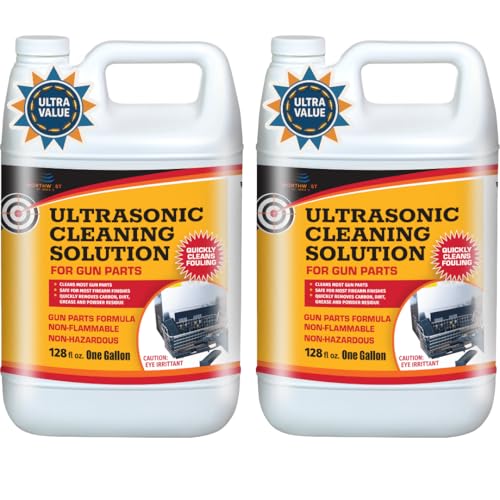


If you are planning to insulate your home or any other building, using a foam insulation gun can be a great option. Foam insulation guns are designed to make the insulation process easier and more efficient. They allow you to apply foam insulation quickly and precisely, ensuring that you get the best results.
Before using a foam insulation gun, it is important to understand how it works and how to use it correctly. It can be a bit tricky to get the hang of it at first, but with a little practice, you will become an expert in no time.
When using a foam insulation gun, it is important to start by preparing the area that you want to insulate. Make sure the surface is clean and free of any debris or dust. This will ensure that the foam adheres properly and provides a good seal.
Next, you will need to prepare the foam insulation canister. Shake the canister well to mix the foam components. Insert the canister into the foam insulation gun, making sure that it is securely attached. The gun should have a trigger that controls the flow of foam. Pull the trigger to release the foam and apply it to the desired area.
As you use the foam insulation gun, keep in mind that the foam expands and hardens relatively quickly. This means that you need to work efficiently and avoid wasting any foam. Start by applying a small amount of foam to the area and then gradually build up the layers as needed.
Move the foam insulation gun slowly and evenly across the area, making sure to cover all the gaps and cracks. The foam will expand to fill in the spaces and create a solid insulating layer. It is important to work carefully and pay attention to detail to ensure that the insulation is applied evenly.
Once you have finished applying the foam insulation, allow it to dry and harden completely before touching or painting over it. This usually takes a few hours, depending on the type of foam used. Avoid disturbing the foam during this time to ensure that it sets properly.
Using a foam insulation gun can be a cost-effective and efficient way to insulate your home or building. With proper preparation and technique, you can achieve great insulation results that will help to reduce energy consumption and create a more comfortable living or working environment.
Tips for Using a Foam Insulation Gun
Using a foam insulation gun can be a great way to efficiently and effectively insulate a variety of surfaces. However, to ensure the best results, it’s important to follow a few key tips:
1. Prepare the Surface: Before using the foam insulation gun, make sure the surface is clean and free from dust, dirt, and debris. This will help the foam adhere properly and create a strong seal.
2. Shake the Canister: It’s important to shake the foam canister well before attaching it to the gun. This ensures that the foam is properly mixed and ready to use.
3. Practice on a Test Surface: If you’re new to using a foam insulation gun, it may be helpful to practice on a test surface first. This will allow you to get a feel for the gun and adjust your technique before working on a larger project.
4. Use Proper Safety Equipment: Foam insulation can be messy and sticky, so it’s important to wear appropriate safety equipment, such as gloves and safety goggles, to protect yourself.
5. Start with Small Applications: When using a foam insulation gun, it’s best to start with small applications and gradually build up as needed. This allows for better control and prevents over-application.
6. Work in Layers: Instead of applying a thick layer of foam all at once, it’s often more effective to work in thin layers. This allows the foam to expand and cure properly, creating a stronger and more reliable seal.
7. Clean the Gun Properly: After using the foam insulation gun, it’s important to clean it thoroughly to prevent the foam from hardening and clogging the gun. Follow the manufacturer’s instructions for cleaning and maintenance.
8. Store the Foam Properly: Foam insulation canisters should be stored in a cool, dry place to prevent the foam from curing prematurely. Pay attention to the manufacturer’s recommendations for storage temperature and expiration dates.
By following these tips, you can ensure that you get the most out of your foam insulation gun and achieve excellent insulation results.
Preparing the Area
Before using a foam insulation gun, it is important to properly prepare the area to ensure a successful application. Follow these steps to prepare the area:
1. Clean the Surface:
Begin by cleaning the surface where the foam insulation will be applied. Remove any dirt, dust, or debris that could impede the adhesion of the foam.
2. Protect Surrounding Areas:
Use masking tape or drop cloths to protect any areas that you do not want the foam insulation to come into contact with. This includes windows, doors, and any other sensitive surfaces.
3. Ensure Proper Ventilation:
Work in a well-ventilated area to allow for adequate airflow. Ventilation is important to dissipate any fumes that may be emitted during the foam insulation application process.
4. Wear Protective Gear:
Put on protective gear before using a foam insulation gun. This includes safety goggles, gloves, and a dust mask or respirator to protect yourself from any potential hazards.
5. Check the Temperature and Humidity:
Check the temperature and humidity levels in the area where you will be using the foam insulation gun. The manufacturer’s instructions will specify the optimal temperature and humidity ranges for proper foam expansion and curing.
By properly preparing the area before using a foam insulation gun, you can ensure a clean and successful application of the foam insulation.
Choosing the Correct Foam Insulation
When it comes to choosing the correct foam insulation, there are a few factors you need to consider. The type of insulation you select will depend on the specific needs of your project. Here are some key points to keep in mind:
1. Project Type:
First, you need to determine the type of project you are working on. Is it a small-scale DIY project or a large-scale commercial project? The size and complexity of your project will often dictate the type of foam insulation you should use.
2. Insulation R-Value:
The R-value measures the thermal resistance of the insulation material. It indicates how well the insulation can resist heat transfer. The higher the R-value, the better the insulation’s thermal performance. Consider the climate in your area and the desired level of insulation when determining the appropriate R-value for your project.
3. Application Method:
There are two main application methods for foam insulation: spray foam and foam boards. Spray foam insulation is typically used for filling gaps and cracks, while foam boards are often used for larger areas such as walls and roofs. Consider the specific requirements of your project when choosing the application method.
4. Moisture Resistance:
If moisture is a concern in your project, it’s important to select a foam insulation that offers good moisture resistance. Moisture can lead to mold and mildew growth, which can compromise the effectiveness of the insulation. Look for foam insulation products that have a high moisture resistance rating.
5. Fire Safety:
Depending on the building codes and regulations in your area, you may be required to use foam insulation with specific fire safety ratings. Make sure to check the local building codes and select a foam insulation that meets the necessary fire safety requirements.
By considering these factors, you can choose the correct foam insulation for your project and ensure optimal thermal performance and energy efficiency.
Using the Foam Insulation Gun
When using a foam insulation gun, it is important to follow the proper steps to ensure effective insulation and safety. Here is a guide on how to use the foam insulation gun:
1. Prepare the area:
Prior to using the foam insulation gun, make sure the area is clean and free from debris. Remove any loose materials or objects that may interfere with the insulation process. Cover any surfaces that you want to protect from foam overspray.
2. Shake the foam canister:
Before attaching the foam canister to the gun, shake it vigorously for a minute or two. This helps to mix the chemicals and ensure a consistent foam mixture.
3. Attach the foam canister to the gun:
Most foam insulation guns have a screw-on attachment for the canister. Make sure it is securely fastened to avoid leaks. Some guns may require additional adapters or fittings, so refer to the manufacturer’s instructions for proper attachment.
4. Test the foam gun:
Prior to using the foam gun on your desired surface, it is advisable to do a test spray on a piece of cardboard or disposable material. This will help you get familiar with the flow and adjust the nozzle if needed.
5. Apply the foam insulation:
Hold the gun at a 45-degree angle and apply the foam insulation in smooth, even strokes. Start from one corner of the area and work your way across, ensuring complete coverage. Keep the gun moving to prevent excessive build-up in one spot.
6. Clean the gun after use:
Once you have finished using the foam insulation gun, it is crucial to clean it properly. Follow the manufacturer’s instructions for cleaning and maintenance. This will prolong the lifespan of the gun and prevent any blockages or malfunctions.
Note: Always wear appropriate personal protective equipment (PPE) such as safety glasses, gloves, and a respirator when working with foam insulation. Read the instructions and safety guidelines provided by the manufacturer before using the foam insulation gun.
By following these steps, you can effectively use a foam insulation gun to achieve the desired insulation results. Remember to work carefully and take necessary precautions to ensure a successful and safe insulation process.
Cleaning and Maintenance
Proper cleaning and maintenance of your foam insulation gun is essential to ensure its longevity and effective performance. Here are some guidelines to follow:
| Step | Instructions |
|---|---|
| 1 | Always wear protective gloves and safety goggles before starting the cleaning and maintenance process. |
| 2 | Remove the foam canister from the gun and dispense any remaining foam by pulling the trigger until only the cleaning agent comes out. |
| 3 | Uncouple the gun from the canister and place it in a container filled with a suitable cleaning solution (consult the gun manufacturer’s instructions for recommended solutions). Let it soak for the recommended time. |
| 4 | Use a brush or scrubbing pad to remove any remaining foam residue from the gun. Pay special attention to the nozzle and other small crevices where foam can accumulate. |
| 5 | Rinse the gun with clean water to remove any cleaning solution and residue. Ensure that all parts are thoroughly rinsed. |
| 6 | Dry the gun using a clean cloth or allow it to air dry completely before reassembling. |
| 7 | Inspect the gun for any signs of wear or damage. Replace any worn-out or damaged parts as necessary. |
| 8 | Store the foam insulation gun in a clean and dry place, away from direct sunlight and extreme temperatures. |
Regular cleaning and maintenance of your foam insulation gun will help prolong its lifespan and ensure its optimal performance, saving you time and money in the long run.







